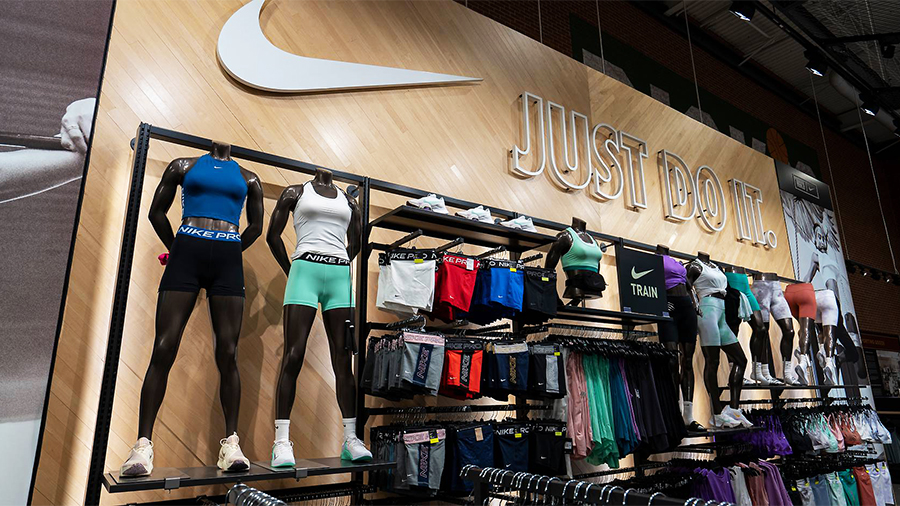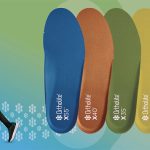Dick’s Sporting Goods delivered its seventh consecutive quarter, seeing earnings and sales surpass Wall Street expectations to power two straight record years in 2020 and 2021. With the performance over the pandemic, the nation’s largest sporting goods chain said the company’s fiscal 2022 outlook provides a “new foundation” to build on in the years ahead.
The guidance includes significantly higher margin expectations versus pre-pandemic rates due to a highly-differentiated product assortment helped with greater access to high-heat products from major brands, including Nike, as well as expanded private label assortments. Dick’s has also become more strategic around personalized pricing and promotions.
On a call with analysts, Dick’s officials stressed that while the retailer has benefited from greater interest in sports and outdoor activities, its strong performance reflected the payback from investments made since 2016.
“Our current success is the result of a deliberate multi-year transformational journey that is driving sustainable sales and profitability growth,” said Ed Stack, executive chairman. “With an athlete first approach, we have built significant competitive advantages across our merchandise assortment brand relationships, service model in-store and digital commerce experiences. We’ve also invested in our technology capabilities, including data science and personalization to advance our omnichannel growth strategy. Virtually nothing about our business is the same as it was five years ago.”
“Over the past five years, we’ve been on a transformational journey that’s driving sustainable growth in sales and profitability,” added Lauren Hobart, president and CEO. “During this time, we meaningfully improved our merchandise assortment, including developing even stronger relationships with our key brand partners to drive greater access to highly differentiated products. We implemented an enhanced service model and leaned into highly engaging in-store experiences. We focused on our culture and put our teammates, athletes and communities at the center of everything. Finally, we invested in technology, data science, our omnichannel platform, and significantly improved our digital marketing and personalization capabilities. These transformational changes drove improved results well before the pandemic and further accelerated our performance over the past two years. This is a growth company.”
The strong results and solid guidance stand out compared to many of its peers. Hibbett in mid-February warned that fourth-quarter sales would miss guidance primarily due to late deliveries. On February 25, Foot Locker said a sharp reduction in allocations from Nike would likely result in a high-single-digit decline in comps in the current year.
Fourth-Quarter Comps Expand 5.9 Percent
In the fourth quarter, sales increased 7.3 percent to $3.35 billion, representing the largest sales quarter in Dick’s 74-year history. Sales were up 28.5 percent against the fourth quarter of 2019. Sales were just ahead of Wall Street’s consensus target of $3.31 billion.
Consolidated same-store sales increased 5.9 percent on top of a 19.3 percent increase in Q420 and a 5.3 percent increase in Q419. Strong comps were driven by growth in team sports, apparel, footwear, a 4.8 percent increase in the average ticket price, and a 1.1 percent increase in transactions.
Brick-and-mortar sales increased 14 percent year-over-year and were up 24 percent versus Q419 with roughly the same square footage. As expected, e-commerce sales decreased 11 percent versus last year against a gain of 57 percent in the fourth quarter of 2020. The decline reflects Dick’s decision to minimize site-wide promotions to managing inventory throughout the latest quarter better. Compared to 2019, e-commerce sales increased 39 percent. As a percent of sales, online grew from 25 percent in 2019 to 27 percent in the current quarter. E-commerce penetration was 32 percent last year.
Gross margins in the quarter improved 391 basis points compared to 37.58 percent. The improvement was driven by merchandise margin rate expansion of 476 basis points, primarily due to fewer promotions, its increasingly differentiated assortment and disciplined promotional strategies. Dicks’ said certain categories in the marketplace continue to be supply-constrained, which resulted in a reduced promotional environment. Margins also benefited from a favorable sales mix. As expected, these improvements were partially offset by higher freight costs resulting from supply chain disruptions.
Compared to 2019 on a non-GAAP basis, gross margins improved 898 basis points, driven by merchandise margin rate expansion of 848 basis points.
SG&A expenses were 23.4 percent of sales, leveraging 97 basis points due to the sales increase. SG&A expense deleveraged 45 basis points versus Q419.
Boosted by strong sales and merchandise margin rate expansion, non-GAAP earnings before taxes were 13.97 percent of sales, up 442 basis points from the same period last year and 847 basis points from Q419.
Non-GAAP earnings per share reached $3.65, a 50 percent increase over $2.43 last year and a 176 percent hike over $1.32 in Q419. On a GAAP basis, EPS came to $3.16, an increase of 43 percent compared to the fourth quarter of 2020 and 290 percent compared to the fourth quarter of 2019.
Full-Year Sales Expand 28 Percent
In the full year, sales were $12.29 billion, an increase of 28.3 percent compared to fiscal 2020 and a 40.5 percent increase compared to fiscal 2019. Consolidated same-store sales increased 26.5 percent in fiscal 2021, followed by consolidated same-store sales increases of 9.9 percent in fiscal 2020 and 3.7 percent in fiscal 2019.
The fiscal 2021 same-store sales increase included a 42 percent increase in brick-and-mortar stores. E-commerce sales, as expected, decreased 9 percent and followed a 100 percent increase in e-commerce sales in fiscal 2020. E-commerce penetration has grown from 16 percent of total net sales in fiscal 2019 to 21 percent in fiscal 2021, and E-commerce penetration was approximately 30 percent in fiscal 2020.
Gross margins in 2021 reached 38.3 percent of sales, improving 650 basis points from the prior year. On a non-GAAP basis, earnings before taxes reached 16.47 percent of sales, up 882 basis points from the same period last year. Total non-GAAP EPS in 2021 was $15.70, up 157 percent from $6.12 in fiscal 2020 and ahead 325 percent from $3.69 in fiscal 2019.
Dick’s Set For Growth In 2022
Looking ahead, Hobart said that with Dick’s recent completion of a $1.5 billion long-term investment-grade debt issuance, the retailer has “ample flexibility to pursue a robust growth agenda.” She added, “We’re entering 2022 with incredible momentum and confidence in our business. Virtually our entire category portfolio has re-baselined meaningfully higher versus pre-COVID sales levels. We’ve gained considerable market share in key categories. And as the largest US sporting goods retailer, we are well-positioned to extend our lead and continue gaining share in a large, growing and fragmented industry. Importantly, our 2022 sales and earnings guidance establishes a new foundation upon which we will build in the years ahead.”
Hobart said that in 2022, Dick’s would focus on accelerating existing strategies that have paid off.
“First, our stores will continue to be the hub of our industry-leading, omnichannel experience, serving both our in-store athletes and providing over 800 points of distribution for digital fulfillment,” said Hobart.
Hobart noted that stores comped up 42 percent in the year and enabled over 90 percent of total sales, fulfilling approximately 70 percent of online sales through ship-from-store, in-store, or curbside pickup.
“In 2022, we will continue to enhance our service model and provide opportunities to try products through experiential elements such as our premium full-service footwear deck, our HitTrax batting cages, soccer shops, and golf simulators. We will also continue to invest in technology to enhance our store fulfillment and in-store pickup capabilities and drive the profitability of our e-commerce business,” said Hobart.
For its online business, investments will be made in personalization and navigation to help customers find merchandise. Said Hobart, “Backed by our investments in service, data science and our Scorecard program, we will continue to serve our athletes whenever, wherever and however they want, instilling confidence in their purchase and inspiring their loyalty.”
Within merchandising, relationships with key brands are “stronger than ever,” and Dick’s will focus on continuing its recent momentum in key categories such as athletic apparel, footwear, team sports, and golf. Hobart said, “We are rooted in sport, and our ability to showcase an entire brand portfolio across our national store footprint and online is highly valued by our strategic partners.”
Asked about its relationship with Nike, Hobart said, “Our relationship with Nike is at an all-time high, and I would say it’s become incredibly strategic in that we are reinventing together what the customer experience is. We started that over the past several years and most recently with our connected membership program, where consumers can opt-in to Dick’s and Nike memberships, which unlocks a tremendous amount of access to products for them, experiences and content. And, so, I do believe we will continue to innovate with Nike, spend in co-marketing as we have and reinvent the consumer experience. I would say that that’s true of all of our strategic partners. We have many strategic partners. If you look at our co-creation model with Adidas and Under Armour and tremendous strategic partnerships with Callaway and TaylorMade.”
She said Nike accounted for 17 percent of Dick’s sales last year.
Beyond national brands, Hobart said vertical brands, or private-label brands, eclipsed $1.7 billion in sales in 2021 and together represented the retailer’s largest brand in golf, team sports, fitness, and outdoor equipment. Private labels include DSG, Calia and Vrst. Said Hobart, “Our vertical brands have become a significant source of strength and growth.”
Hobart also said Dick’s remains “very pleased” by the early results of its new concepts, including Dick’s House Of Sports, Golf Galaxy Performance Center, and Public Lands. “We’re excited to continue to refine and grow these concepts while pulling key learnings into our core business,” said Hobart.
Full Year 2022 Outlook
Looking to 2022, Dick’s projects EPS in the range of $9.96 to 11.13, which compares to $13.87 in fiscal 2021. The guidance assumes $55 million of pre-tax interest expense associated with its new $1.5 billion long-term debt issuance and the expectation to repurchase a minimum of $200 million of its common shares in 2022.
After adjusting for interest expense and share dilution relating to its senior convertible notes, non-GAAP EPS is expected in the range of $11.70 to $13.10 against $15.70 in fiscal 2021. Analyst estimates for 2022 had ranged between $4.03 and $14.39, with the average estimate at 11.31.
Consolidated same-store sales are expected to be in the range of negative 4 percent to flat. The comps are on top of a 26.5 percent comp sales increase in 2021 and a 9.9 percent increase in 2020. The quarterly comps are expected to improve sequentially throughout the year, with the first part of the year through May impacted by year-ago stimulus spending and the latter part expected to benefit from improved inventory levels.
Photo courtesy Dick’s Sporting Goods
















